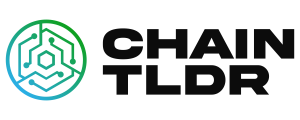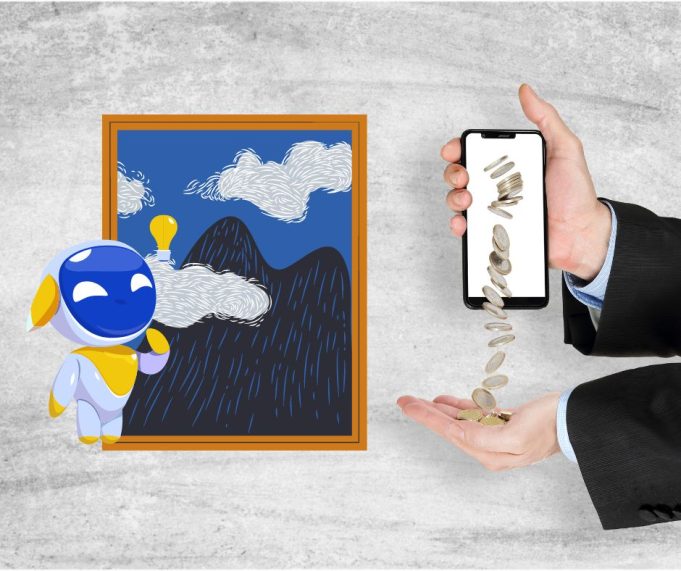Long-discussed and ever distant, AI technology has finally “landed” this year, with ChatGPT’s rapid development becoming the focus of attention of Internet giants. At the same time, news of the “first AI painting fraud case in China” has become a hot search topic. It is understood that recently, a poster with the words “party with yacht maids in Suzhou’s Jinji Lake” has been widely circulated on the Internet. According to the poster, the event costs 3000 yuan per person, with one-on-one maid attendant service. Subsequently, netizens pointed out that the maid photos released in the event were AI-imitated real-person photos, not real people. When responding to the media, the Suzhou police said, “The police station has interviewed the message publisher and has dealt with it.”
Has someone used AI to draw “fraud”? This may still be an isolated case, but on the market, there are already various ways to use AI drawing to “drain” and “make money”. Many people’s impression of AI painting may still be limited to simple lines and stiff puppet images, but the sweet face, eye-catching figure, and slightly revealing clothes of the “AI beauty” have already won over 10,000 fans on Little Red Book, and unsuspecting netizens are easily deceived by their realistic images. However, upon closer observation, it can be seen that there are obvious bugs in the details due to the limitations of AI technology, such as finger deformation and facial template standardization.
At the same time, Kbopo Finance noticed that more and more AI painting and design positions with salaries between 20,000 to 50,000 on multiple recruitment platforms are being listed and the basic ability of “mastering AI painting knowledge” was also included in the ordinary painters’ requirements. Advertisements for AI painting courses on platforms such as Zhihu, Douyin, and Little Red Book are everywhere, luring a large number of “small whites” to try to make money by promising monthly income of more than 10,000. Last year, AI effects on Douyin were popular for a time, but most people still viewed it as an experiential entertainment tool. Now, AI painting not only uses “real people” to attract attention, but has also penetrated into game, illustration, advertising, decoration and other fields. From PGC to UGC, more and more people are involved, and AI painting has already been running on the path of monetization. Who is making money with AI painting now? How do they make money? For ordinary people, is AI painting a new way to make money or a way to “cut leeks”? When AI painting is used as a “fraud” tool, where is the bottom line for making money?
ChatGPT is still in the heat of debate, while AI drawing has become a money-making tool for many companies and individuals. Currently, there are three ways to make money from AI drawing: 1) tech companies providing data supply, segmentation and annotation, open source algorithms, and production tools; 2) content creation and distribution platforms providing AI drawing tools, and content terminal producers, consumer goods manufacturers can also join in; 3) ordinary people participating in AI drawing-related professions, such as AI drawing courses, AI keyword production, AI drawing anti-counterfeiting, etc. The first one has a higher technological barrier, with popular AI drawing models mainly coming from Google, Open AI, Meta, StabilityAI and other tech companies. The second one is the mainstream way to make money from AI drawing, such as building AI drawing websites, apps, etc.
KaiBaoLuo Finance found that the profit model of domestic AI drawing platforms is generally the same, i.e. users can register to receive certain points, generate AI pictures within the limit for free, and then charge according to quantity. For example, Wen Xin Yi Ge will give 50 electricity when registered, and consume 2 electricity for each picture, and 9.9 yuan can be recharged for 100 electricity (equal to 50 AI pictures). Though the exact profits of domestic AI drawing websites have not been disclosed, some successful commercial cases abroad provide hints for their profitability. Midjourney, a commonly used AI drawing website, utilizes subscription payment system, where users can only own the copyright of the photos they make after subscribing. It’s known that Midjourney’s commercial part adopts monthly subscription service of 10 to 60 US dollars. With the current user scale, expected annual revenue is around 100 million US dollars. Apart from large AI drawing websites, AI drawing apps are also profitable. A developer of AI drawing app shared that within three days of launching, the app received over 50,000 registrations with over 50% of them paying for monthly subscription fee. He said that users can generate AI works for free, as well as buy AI pictures and watch ads for revenue. He also mentioned that within two months of running the app, he had earned a year’s salary. The third type of revenue is derived from AI drawing, where users generate works with AI tools and then sell them. Before, a promotional post of AI drawing tutorial was widely shared on Little Red Book, which elaborated on the ways of making money with AI+drawing, such as designing computer wallpapers, celebrity posters, digital collections, etc.
AI wallpaper draw-in, AI digital image sales, AI virtual clothing from Douyin and Little Red Book. A blogger who does AI painting introduced to Kaipulao Finance that the side job of AI painting mainly revolves around painters, who, with a certain foundation of painting knowledge, can use AI-assisted design in the fields of advertising, film and television, fashion, games, architecture, etc., especially those that need a sense of technology and trend. Fashion designer Farica-Fan also told Kaipulao Finance that there are many ways for ordinary people to make money with AI painting, such as making wallpaper short videos with pictures generated by AI painting small programs, which are then put on Douyin and Kuaishou to attract users to use small programs and make advertising fees. In addition, due to strict requirements on keywords on some foreign AI painting websites, a number of AI drawing prompts with “advanced, simple, creative” features have emerged in e-commerce websites such as Taobao, usually priced between 10-20 Yuan.
“Overall, making money with AI painting is more systematized at the technical level and has certain industry barriers. Plus, the side job related to AI painting has a low threshold. Many AI painting promotional courses emphasize “no place, simple tools, daily side job, and monthly income over 10,000,” attracting many beginners to try their luck.
So can AI painting really achieve a monthly income of more than 10,000 as a side job?
“Now I can sell an AI painting for two digits, mostly around 20-30 yuan. The price of registered copyright paintings will be higher, around 130 yuan, but there are few buyers. If it is creative digital collection, the price is usually between 100 yuan, the most profitable must be to accept some commercial orders, design promotional posters for products, but this kind of brand usually looks for a large design company.” A AI painter told Cai Bao Finance.
She introduced that if you learn AI painting, the ways to make money are mostly to customize good-looking photos, such as cartoon avatars, wallpapers, star posters, etc. After deducting the initial investment of personal learning of AI painting, the cost of expensive courses and time cost, the cost performance is not high.
Likewise, she said that for painters with certain foundations, the works produced to sell at higher prices need to apply for copyright independently to specialized intermediaries. After obtaining the proof, the price of a work is usually around 200 yuan, which is also not cost-effective.
For the AI painting courses that are widely advertised “monthly income over 10,000”, she reminded that there are many problems such as false propaganda, bundling consumption, high membership fees, etc., and applicants should be careful.
Fish also added to Kai Bao Finance that the money earned is basically the benefit of the early technical development, with little direct conversion from the user end. If a user watches a video ad, the split is about 3-5 cents, with low returns. AI painting was fine when it was popular, but recent user use has been steadily declining, and after deducting the system maintenance cost, the small program is now at the edge of loss. Moreover, users’ willingness to pay for AI painting is also decreasing. According to a report on user use of AI painting released by 6pen, 60% of users have not paid for AI painting products, 16% pay within 10 yuan, 14% pay within 100 yuan, and less than 10% pay more than 100 yuan. When users become less willing to pay for AI painting, making money becomes difficult. In January this year, AI image generation company Stock AI issued a public letter to users, basically saying that the company will close StockAl, user subscription plans will be canceled, and refunds will be made according to the remaining time, the reason being that the current paying user base cannot cover the high cost. In the eyes of the outside world, this move is like a cold water on the road of AI painting development. Industry insiders said that the C-end model of AI painting in the Chinese market is mainly a free experience platform, these platforms are not profitable enough, mainly relying on traffic realization. For example, the popular TikTok AI effects are also limited to short-term traffic exposure, without more product follow-up, and a batch of AI painting small programs also made a quick buck before fading away. Unlike the daily use of AI dialogue, the use of AI images is relatively limited.
AI painting fraud going viral, AI-generated characters becoming “internet celebrities”, and popular AI special effects have exposed two major issues. On one side, many AI paintings are suspected of “cheating”. Some who have used AI effects found that cartoons converted from real photos have questionable poses and revealing clothes. Similarly, AI virtual internet celebrities also rely on “cheating” to attract traffic. Worse, some criminals use AI painting software to mass-produce pornographic images for sale.
Suspected copyright infringement of real artwork by AI painting software Nijijourney has come to light after illustrator Sueno Luoqi revealed on their personal Weibo. Many of the generated pictures have similar styles to certain artists’ works, with some even bearing their signature and watermark. It is known that many AI painted works are suspected of plagiarizing real artwork and some have been used commercially without clear copyright boundaries. Similarly to controversial AI face-swapping, people have been creating AI-based artworks on real models, and celebrities’ images have been AI-ized, leading to an increase in rumors and fake news, thus raising concern for privacy protection. Li Sheng, director of Beijing Zhipu Law Firm, explains to Kaipoluo Finance that due to the logic of AI painting and the generated images not being simple pieces of collage, but rather works of similar styles created through the learning of big data, unauthorized use of other’s copyrighted content for re-creation may constitute an infringement. He also emphasizes that, from the judicial practice and current development of AI technology, there is a barrier of proof in determining whether intellectual property of others has been used in the process of AI technology. Although AI-related crimes are not yet fully regulated in China, as AI does not possess self-awareness and is completely controlled by humans, those who commit crimes with AI will still face legal penalties. Baidu Founder and Chairman Robin Li once said that there are three development stages of AIGC: the first is the “assistant stage”, where AIGC assists humans in content production; the second is the “collaboration stage”, where AIGC appears in the form of virtual and real coexistence, forming a symbiotic relationship between humans and machines; and the third is the “original stage”, where AIGC independently completes content creation. Evidently, AI painting is currently in the first stage. For regular people, AI painting is not a key to “financial freedom













